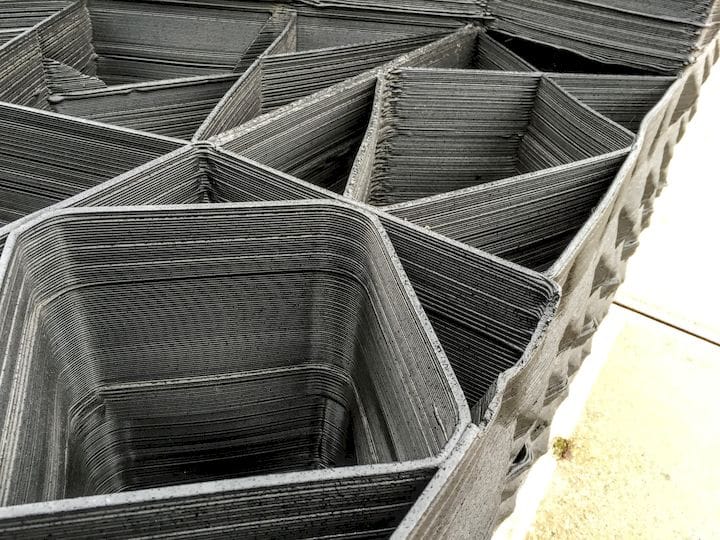
This week’s question is about construction 3D printing.
A friend of a friend asked whether they could 3D print a house. Apparently the friend had recently obtained a larger property outside of town and as they were interested in future tech, thought the idea of 3D printing a house could be a great idea.
Short answer: it isn’t.
But I’m sure readers would like a longer answer.
There have been countless “3D Printed House in 24 Hours” stores in mass media by mercenary journalists, and they are all entirely wrong. What has happened, occasionally, is that the concrete foundations and walls have been extruded by some type of construction 3D printing, possibly in 24 hours. That is, after machine setup.
The remaining portions of the house have to be built using conventional tradespeople. This includes plumbing, insulation, HVAC, electrical, finishings, floorings, and, well, everything else. Those steps take the normal amount of time and thus the “house” takes far more than 24 hours to complete.
But let’s take this a bit further. Suppose you wanted to 3D print the concrete portions anyway, because it would be fun.
I believe there would still be plenty of issues to overcome before this could succeed. Here’s some thoughts:
Concrete Quality
Unfortunately many concrete 3D printers have an issue: in order to ensure smooth flows they reduce the amount and size of aggregate in the mix. This can dramatically lower the strength of the resulting concrete. As a result, many construction 3D printing examples are really just experiments.
Weather
3D printing concrete likely requires near-perfect weather to take place. After we spoke with an actual concrete worker, the issue of “cold joints” was raised: if an extrusion takes place in cold weather, subsequent layers will be deposited on top of now-colder layers and you’ll get a “cold joint” that dramatically reduces the strength of the structure.
Permits
Because of the issues above it is likely going to be quite challenging to obtain occupancy permits for 3D printed structures. Permits are a local thing, so it’s not like permitting will suddenly happen everywhere. A process has to be undertaken to allow for this type of construction in each and every jurisdiction, and that will take many years.
Is concrete 3D printing allowed in your jurisdiction? Likely not at this stage. And if you still want to proceed, YOU will have to be the one to carry it forward through whatever legal, political and financial steps may be required.
Design
The big advantage of 3D printing is that you can easily produce unusual geometries. This has been done for decades with small polymer and metal 3D printers, but has yet to be truly exploited for large-scale construction 3D printing. In fact, I am not even sure if design software exists that can be properly used to generate arbitrary complex — but construction 3D printer-capable — 3D designs.
If you’re going to end up with more-or-less the same kind of designs as traditional methods, then why bother with the complexities of construction 3D printing?
Cost
What is the cost of construction 3D printing? It’s not clear, in spite of many players stating that it’s less expensive. The truth is it MIGHT be less expensive in CERTAIN regions due to some peculiar circumstance. For example, in regions where manual labor is unpredictable, having an automated machine build the project could be advantageous. But are those same conditions present in your jurisdiction?
Contractors
The truth is you will not be operating your own construction 3D printer. The business models that appear to be evolving are two-fold:
- Construction 3D printing in a set factory, where structures are made and then shipped to the construction site; or
- Partnership with a local construction company who obtain a construction 3D printer and associated training.
Unless the former is already in your area (and it most likely won’t be since there are only a handful doing that), you have to choose the second option. But are there really construction companies using this equipment in your area yet? Again, probably not.
To do so, you might have to somehow convince a construction company to take on new equipment and techniques they have likely never heard of, and would no doubt have many questions about.
Bottom Line
To me, it seems that it is today far too early to contemplate 3D printing a house unless you are willing to literally set up the infrastructure and permissions to do so yourself.
Since most people aren’t able or interested in that, you have to wait until the service is offered in your region.
